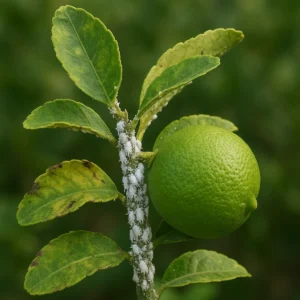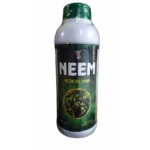Acid Lime Pests
MealyBug

Symptoms
Direct Damage:
- Leaf Yellowing and Curling: Mealybug feeding causes leaves to yellow, curl, and drop prematurely due to nutrient loss.
- Stunted Growth: Heavy infestations can stunt the growth of the tree by draining it of essential nutrients.
- Wilted Appearance: The affected parts of the plant may appear wilted and weakened.
Indirect Damage:
- Honeydew and Sooty Mold: Mealybugs excrete a sticky substance called honeydew, which can lead to the growth of sooty mold on leaves and fruit. This black fungal growth reduces photosynthesis and lowers fruit quality.
- Transmission of Plant Diseases: Mealybugs can sometimes transmit plant pathogens, such as viruses, which can further damage the plant.
Fruit Damage:
- Fruit Deformity and Drop: Mealybug feeding on young fruits can cause deformities and lead to fruit drop. Infested fruits are often unmarketable due to the presence of the insects and sooty mold.
Identification
Appearance:
- Adult Mealybugs: These insects are small (1-4 mm), soft-bodied, and typically white or pale gray. They have a powdery or waxy coating that gives them a cotton-like appearance. Some species have filamentous wax tails.
- Nymphs: The immature stages (nymphs) resemble the adults but are smaller and may lack the waxy filaments initially.
Behavior:
- Mealybugs are often found in clusters on the undersides of leaves, along leaf veins, in crevices, and on stems and fruit. They feed by inserting their piercing-sucking mouthparts into the plant tissue to extract sap
Management
- Insecticidal Soaps and Oils: Use insecticidal soaps and horticultural oils (such as neem oil or paraffinic oil) to smother mealybugs and disrupt their cell membranes. These products are most effective against immature stages and when the mealybugs are exposed on the plant surface.
- Debark the branches and apply methyl parathion paste.
|
Insecticide |
Dosage |
|---|---|
|
1 ml/lit |
₹999
Select options
This product has multiple variants. The options may be chosen on the product page

